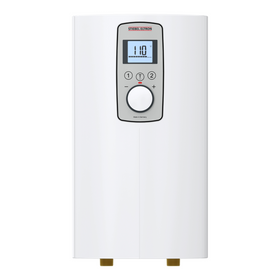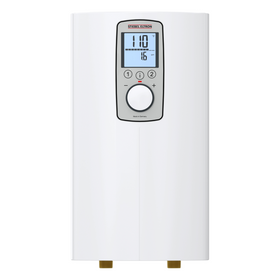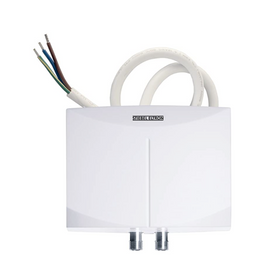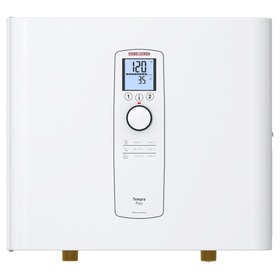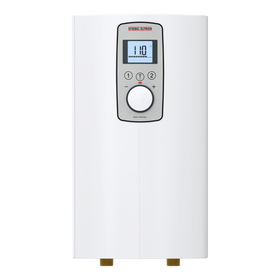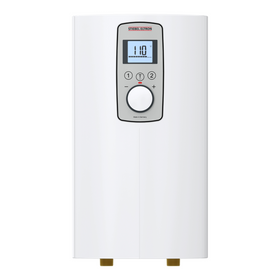
Sump Pumps: Your Complete Guide
Last Updated: Mar 29, 2025There is nothing worse than waking up on a rainy spring morning and finding that your basement (along with the new wood flooring you had just installed) is covered with an inch of water. Recent studies estimate that around 38 percent of houses with a basement experience some problems with water. The study also finds that most new home constructions with a basement will develop a leak sometime within 10-15 years of construction. Improper sealing techniques, excessive settling of the house structure, and severe weather events contribute to basement flooding.
Unless you live in an extremely arid climate where rainfall is a once-a-year cause for celebration, installing a sump pump in your basement is a relatively inexpensive way to protect your basement should an unexpected flood occur. This definitive guide will take an in-depth look at how sump pumps work. We'll cover the benefits they offer to homeowners and how to install one to protect your home from basement flooding.
Table of Contents
- What Is a Sump Pump?
- What Types of Sump Pumps Are Available for Homeowners?
- What Are Submersible Sump Pumps?
- What Are Pedestal Sump Pumps?
- What Are Battery Back-Up Sump Pumps?
- How Much Energy Does a Sump Pump Use?
- Do Sump Pumps Improve Your Home's Health?
- Are Sump Pumps Environmentally Friendly?
- How Long Does a Sump Pump Last?
- How to Install a Sump Pump?
- Do Smart Sump Pumps Exist?
- What Are The Best Brands of Sump Pumps?

What Is a Sump Pump?
A sump pump is a small, submersible pump located in a pit or basin. These pumps are most commonly installed in basements. They are used to quickly remove accumulated water due to leaks from the foundation walls or the home's slab. They are also used to pump water that flows from a french drain that homeowners might install around the home's foundation (either outside or inside). This system is a flood prevention mechanism to avoid water entering the basement at all.

You install the sump pump in a hole or depression carved below your basement floor's main surface. The idea is that most water accumulated in the basement will flow towards this low-lying spot. When turned on, the sump pump will quickly and efficiently pump the flooded water out of the basement to the home's exterior.
Many sump pumps come equipped with valves and sensors that detect escalating water levels or water pressure within the basement. These sump pumps will automatically turn on when your basement begins to flood, or the sump hole fills, even if no one is at home. This feature of sump pumps can significantly limit or eliminate the damage that occurs due to basement flooding.
In general, most experts believe that homeowners have a 48-hour window to act after even a minor basement flood. After that period, mold growth will become widespread, making restoration much more costly and time-consuming. Leaving standing water in your basement for more than 48 hours might also lead to structural damage to your foundation, which could result in extremely costly repairs.

What Types of Sump Pumps Are Available for Homeowners?
There are two main types of sump pumps available to homeowners: submersible sump pumps and pedestal pumps.
What Are Submersible Sump Pumps?
A fully submersible sump pump is the most common type of pump used in houses across North America. As we mentioned in the introduction, this type of sump pump is located in a small basin, or sump pit dug in a strategic part of the basement. During new home construction, builders will generally try to slope the basement floors slightly so that any flooding or excess water will automatically accumulate at this low point. Most of these submersible sump pumps today come with sensors and valves that detect rising water levels. These sump pumps are located in the sump hole, at a lower point than your regular basement floor. So, they can pump out the accumulating water before it reaches the flooring, drywall, and other elements of your finished basement that could get damaged by flooding.
What Are Pedestal Sump Pumps?
Pedestal sump pumps are similarly placed in a sump basin. However, these types of pumps do not have motors that are submergeable in water. With a pedestal pump, the motor is positioned with the pump motor out of the water, located directly above the sump basin. These pumps are usually chosen when the basin is small and does not have enough space or depth for a submersible sump pump.
What Are Battery Back-Up Sump Pumps?
Both submersible sump pumps and pedestal sump pumps can also come with battery backup power. This feature gives homeowners an added sense of assurance that their basement will be protected from flooding even if the electricity goes out for an extended period. According to the Energy Information Administration (EIA), when Hurricane Harvey hit the Houston, Texas area in 2017, more than 10,000 megawatts (MW) of electricity generating capacity experienced forced outages. The massive amounts of rain also led to the flooding of thousands of homes. Many of those homes might have been able to avoid the worst flooding effects had they installed a battery backup system for their sump pump.
How Much Energy Does a Sump Pump Use?
Water pumping technology is relatively energy efficient. As a general rule of thumb, each horsepower (HP) of pumping strength uses about 2,000 watts of power or 2 kilowatt-hours. Unless you have a massive basement, most homeowners can get by with a 1/3 HP or ½ HP sump pump. For a ½ HP sump pump, you can expect to add about 1 kWh to your energy bill for every hour the pump is running. With the average electricity price standing around $0.13 per kWh, this might seem like a negligible expense. Moreover, these pumps will only use energy when they are turned on and running.
However, some experts believe that during extremely wet spring weather, some homeowners might end up spending upwards of $30 per month on running their sump pump. Is your basement leaking and accumulating large amounts of water during wet weather? If so, there are other things you can do to reduce the energy consumption of continuously running your sump pump. Proper sloping around your home's foundation can help move water away from your home. You might consider extending your downspout another 5 to 10 feet to move the rainwater away from the basement.
Do Sump Pumps Improve Your Home's Health?
An accumulation of water in your basement is the best recipe for mold growth. About 10 to 20 percent of the world's population is highly allergic to mold spores, and mold in your basement is one of the most common causes of unhealthy indoor air quality. The International Center for Toxicology and Medicine report finds that an estimated 70 percent of homes suffer from extensive mold growth. A sump pump is a great way to limit the risk of mold in the basement, thus protecting your indoor air quality. You can read more about how to improve your home's indoor air quality here.

Are Sump Pumps Environmentally Friendly?
Sump pumps are relatively energy-efficient and should only add a nominal amount of electricity to your monthly energy bill. They can help to avoid extensive property damage in homes with a basement. For example, an investment in ½ HP sump pump could help homeowners avoid the need to completely gut and renovate a basement that had suffered from extensive flood damage. Extensive basement renovations come with a significant embodied energy footprint, and avoiding these renovations can lower your home's environmental impact.
How Long Does a Sump Pump Last?
Like every appliance in your home, a sump pump will not last forever. Its lifespan will most likely depend on how often it operates. A sump pump installed in a house that only needs to run for a couple of days a year during unexpected rains will most likely last much longer than one used every month. In general, however, you should expect your sump pump to last for around ten years. If you have battery backup for your sump pump, you will most likely need to change the batteries every 4-5 years.
Most homeowners will not notice that their sump pump is broken or inoperable until it no longer automatically turns on after heavy rain. For sump pumps that are seven years or older, you should periodically manually turn them on throughout the year to make sure they are still working.
How to Install a Sump Pump?
In most cases, you install sump pumps during initial basement construction. This timing ensures the basement floor and foundation have the proper sloping to direct accumulated water towards the sump basin. However, it is possible to install a sump pump after the basement finishing is complete. You will need to locate the lowest point in the basement flooring to do this yourself. From there, you will need to dig a small pit or basin and install the pump. Most sump pumps are designed for cycling on and off automatically via a floating device on the pump. So the installation will also require the proper setup of this floating device. For a detailed video on sump pump installation, check out this video.

Do Smart Sump Pumps Exist?
As with most appliances that we use today, smart sump pumps and sump pump monitors have recently hit the market. You can find both smart sump pumps and smart outlets directly designed to be used with your sump pump. With either of these options, the sump pump connects to your home's Wi-Fi. One such product is the Flo by Moen Smart Sump Pump Monitor. It will be able to send text messages, emails, or app alerts to your phone or computer whenever your sump pump is experiencing a problem. The best smart sump pumps will also have high water sensors and alerts to let you know when a flooding event occurs. The best smart sump pump outlets will also offer you a 24/7 monitoring service.

What Are The Best Brands of Sump Pumps?
Several different companies offer sump pumps for homeowners with basements. Among the best brands, you can find:
- Wayne Sump Pumps: This company offers several different sump pumps that are among the best available. Their ¾ HP pump has the ability to move 5,490 gallons per hour (GPH), making it a great option for basements that deal with significant water leaks.
- Superior Sump Pumps: This brand also offers several high-quality sump pumps that provide great value—their ¼ HP pump costs under $60.
Tobias Roberts
Tobias runs an agroecology farm and a natural building collective in the mountains of El Salvador. He specializes in earthen construction methods and uses permaculture design methods to integrate structures into the sustainability of the landscape.




